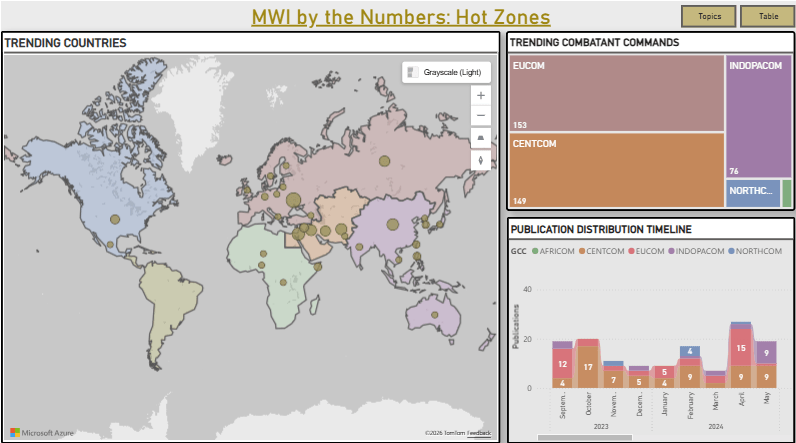Imagine a linear spectrum. On one extreme end is peace. On the other, total war. In between lies everything from political violence and low-intensity conflict, through large-scale combat operations, to strategic rivalry and nuclear saber-rattling.
This is, effectively, the continuum of conflict, and it serves as a cognitive framework for scholars, policymakers, and practitioners to understand the wide variety of ways in which conflict can take shape. But what if that continuum is collapsing? Evidence from ongoing wars suggests that may be happening. In the wake of the October 7 Hamas attacks against Israel, the Israel Defense Forces have targeted individual leaders of the terrorist group in Gaza while Iran has launched ballistic missiles at Israeli cities. In Ukraine, a high-intensity conflict has taken place against a backdrop of Russian hybrid tactics and nuclear threats.
To explore this phenomenon and what it means for the future of war, John Amble is joined on this episode of the MWI Podcast by Dr. Mara Karlin. A professor of practice at Johns Hopkins University’s School of Advanced International Studies and a former assistant secretary of defense for strategy, plans, and capabilities, she wrote a recent article published by Foreign Affairs that weaves together important observations and nuanced insights on this subject. In this discussion, she shares those ideas and describes why she argues that warfare is increasingly defined by a mix of characteristics from across the continuum of conflict.
The MWI Podcast is produced through an endowment generously funded by the West Point Class of 1974. You can listen to this episode of the podcast below, and if you aren’t already subscribed, be sure to find it on Apple Podcasts, Stitcher, or your favorite podcast app so you don’t miss an episode. While you’re there, please take just a moment to leave the podcast a rating or give it a review!
Image credit: Lance Cpl. Emma Gray, US Marine Corps


